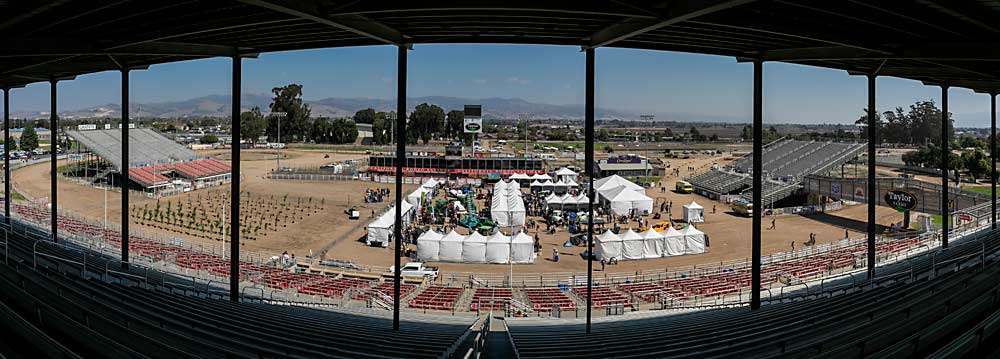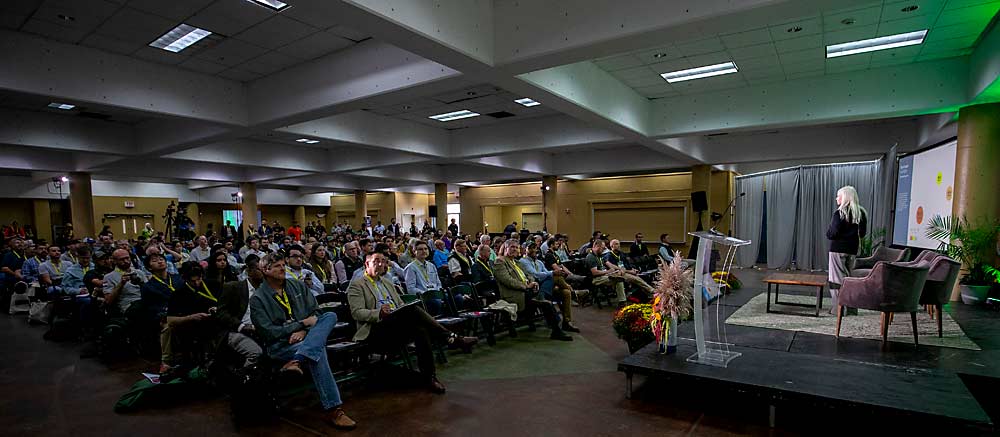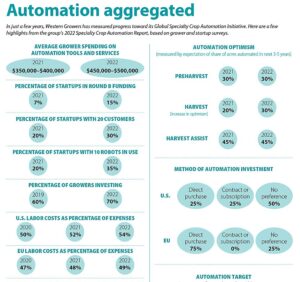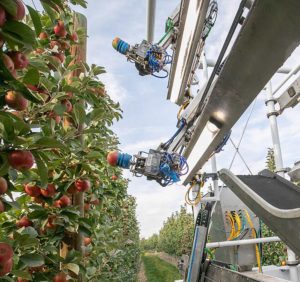
The FIRA USA agricultural automation conference and trade show kicked off with robot demonstrations, a vendor trade show and presentations Sept. 19 in Salinas, California.
Hundreds of attendees checked out more than 50 exhibitors sprawled across the rodeo grounds of the Salinas Sports Complex in the region known for prolific berry and leafy green production.
“We wanted to do this event where farmers really farm and food really grows,” said Gabriel Youtsey, chief innovation officer for University of California Division of Agriculture and Natural Resources and one of the session moderators.
In its second year, FIRA is hosted by agricultural groups aiming to usher specialty crop producers into the age of robotics, machine learning and artificial intelligence. The three-day conference will continue through Sept. 21.
It was held in Fresno in 2022.
Outside, autonomous sprayers, driverless tractors and robotic weeders demonstrated in vegetable patches, a welded iron vineyard and a block of potted trees lined up in rows to simulate an orchard.
One of the highlights was Agtonomy, a Bay Area startup that factory-fits small tractors with automation conversions, enabling spraying, bin hauling, mowing and other chores with a remote operator. The final product is a heftier version of Burro, another California tech startup that makes a robotic cart used in table grape and blueberry harvesting. Burro also demonstrated at FIRA.
Agtonomy has trial vineyard customers but aims to test its products in Washington’s tree fruit industry next year, said Jeff Ota, vice president of engineering.
Inside, presentations and panel discussions covered topics such as a lull in venture capital funding, keeping segments of technology open-sourced and training workers to use and fix robotic machines of the future.

Jennifer Marston, global ag tech editor for AgFunder, told the crowd that funding for farm technology dipped in 2022 after lofty heights in 2021.
“It’s a tough time to be a tech startup,” she said.
She suspects growers need to be more involved with technology discussions earlier, answering basic questions such as “What really needs to be automated?”
Among the visitors Tuesday were roughly 250 high school FFA students.
—by Ross Courtney








Leave A Comment